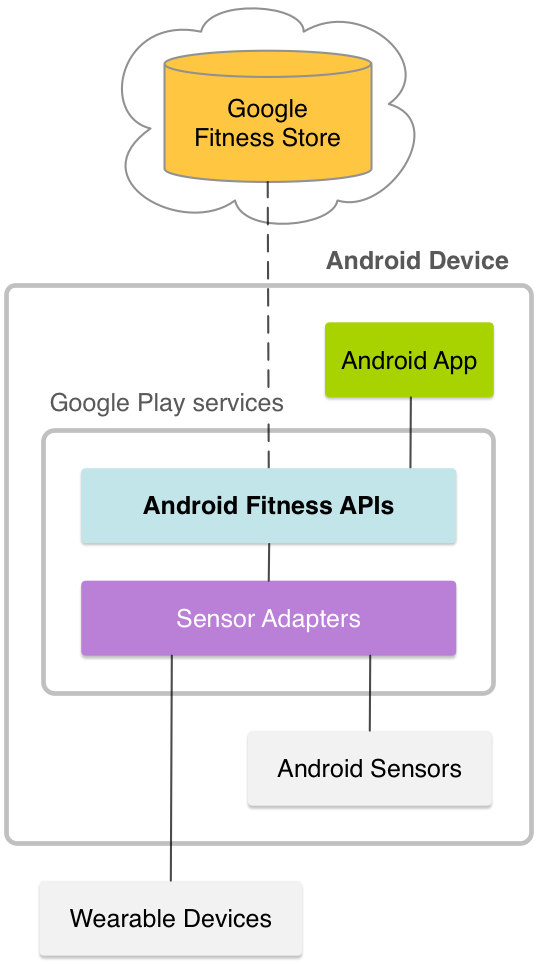Android 版 Google 健身 API 是 Google Play 服务的一部分。Android 4.1(API 级别 16)及更高版本支持 Google Fit API。借助这些 API,您的应用可以执行以下操作:
- 读取近乎实时的历史数据,包括来自蓝牙低功耗 (BLE) 设备的数据。
- 记录活动。
- 将数据与会话相关联。
- 设定健身目标。
读取传感器数据
如果您的应用提供有关用户活动的信息(如每日步数),显示有关用户活动情况的近乎实时的数据会很有帮助。Sensors API 支持访问包含此类信息的原始数据流。数据可能来自 Android 设备上提供的传感器,以及配套设备(如穿戴式设备)中的传感器。
记录数据
如果您的应用需要收集、存储和同步有关用户身体活动的数据,您可以使用 Recording API。此 API 使用订阅存储健康和健身数据。您的应用会指定要记录的一种或多种 activity。然后,即使您的应用未运行,Google 健身也会在后台存储指定类型的数据。重启系统时,它也会恢复这些订阅。

历史数据
如果您希望用户能够查看过往活动的健身数据,可以使用 History API。此 API 提供对历史健康和健身数据的访问权限,允许应用执行批量操作,例如插入、删除和读取数据。
会话
健身数据本身有益,但当您将这些数据与用户活动的额外信息结合起来使用时,会更加有用。Sessions API 将健康和健身数据以及一些元数据捆绑成了称为“会话”的单元。时段表示用户进行健身活动的时间间隔。
查看和设置目标
您的应用可以通过展示用户的健身活动与用户所设置目标的对比情况,激励用户。Goals API 可帮助您的应用向用户显示他们创建的健康与健身目标。

